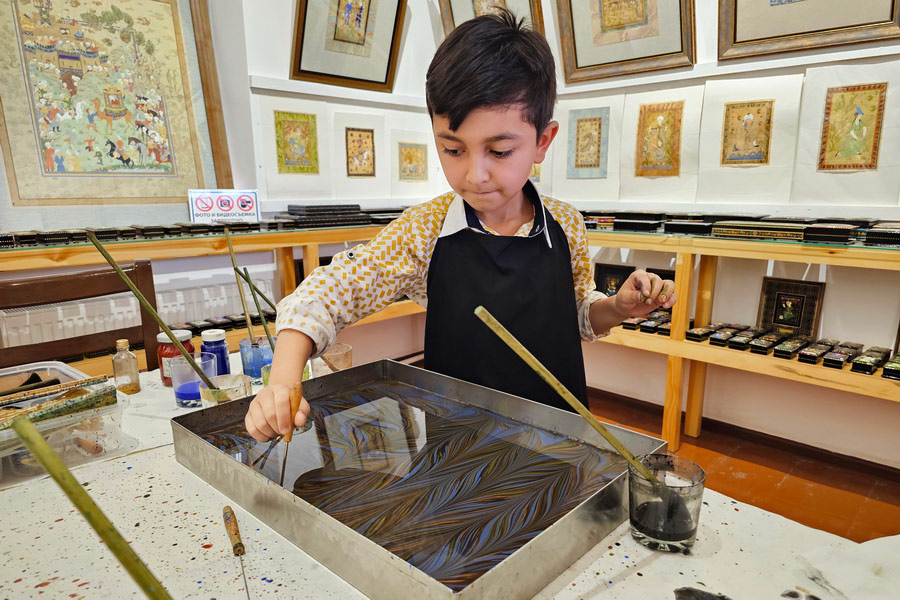
The art of Uzbek miniature painting holds a celebrated place in Uzbekistan's cultural fabric, earning recognition from UNESCO as an oral and intangible masterpiece of the world's cultural heritage. Museums globally showcase these miniatures as prized artifacts, while in Uzbekistan, a number of schools and workshops continue to nurture and pass on this intricate craft from one generation to the next. One such institution is the "Ustoz Shogird" workshop in Bukhara.
Known officially as the "Ustoz-Shogird" Center for Applied Art, this workshop has been under the guidance of Davlat Toshev since its inception. A talented artist in his own right, Toshev began creating miniature art in the early 1990s. Over time, his passion evolved into a home-based workshop where he mentored aspiring artists. In 2018, the operation moved from Toshev's private home to a beautifully restored historic building near the Lyabi-Hauz ensemble.
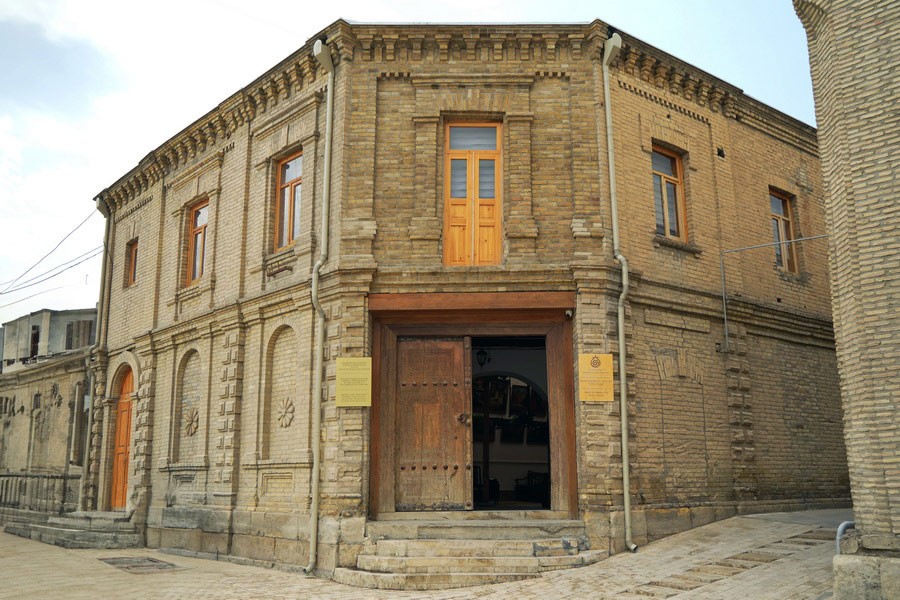
The term "Ustoz-Shogird" translates to "teacher-student," succinctly encapsulating the Uzbek artisans' tradition of passing down their professional expertise. Initially, the school consisted of only a handful of students, but by 2023, that number had swelled to nearly 40. Toshev has a knack for identifying talented children and provides them with the opportunity to develop their artistic potential, all without any cost. This is particularly beneficial for those whose parents might not have the financial means for formal education. Young artists flock to "Ustoz-Shogird" daily after their regular school hours, ranging in age from 7 to 12.
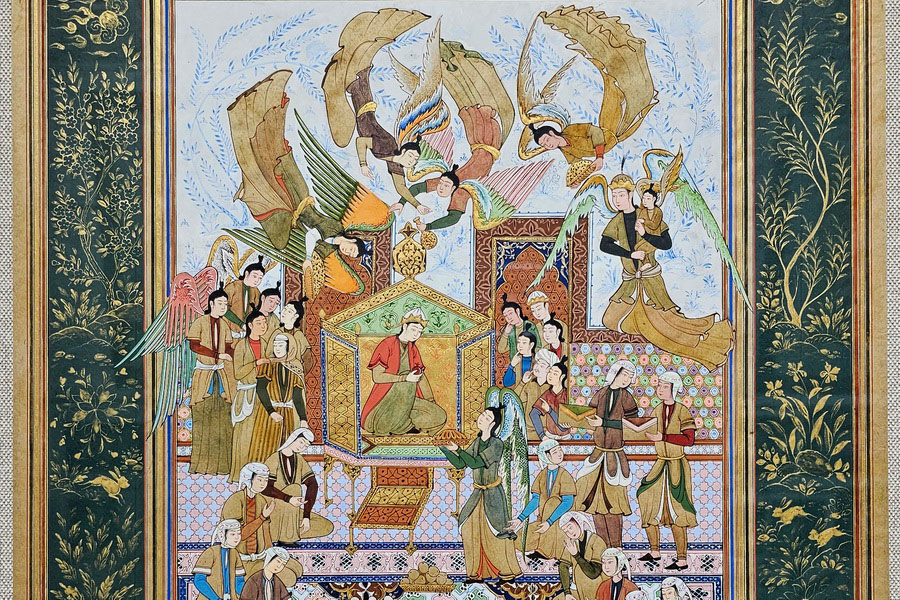
The "Ustoz-Shogird" workshop employs the use of handmade silk paper for their creations. This paper bears a resemblance to the famed Samarkand paper, yet it's subtly more refined due to the slightly differing production techniques. Crafted in Bukhara, the color of this paper is dictated by the age of the mulberry tree it's sourced from — younger trees yield a whiter paper.
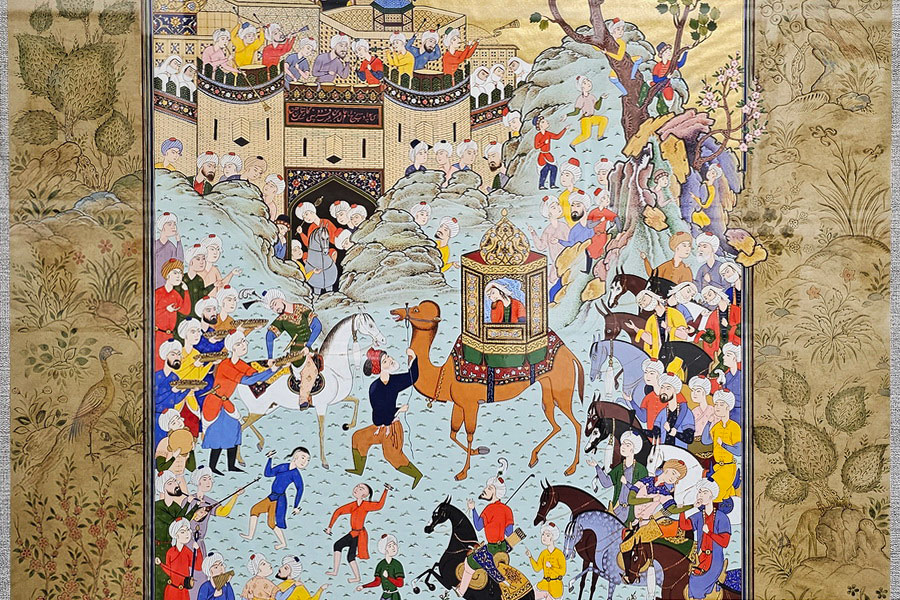
In certain instances, the paper is graced with a distinctive Abru-Bahor pattern through a unique dip-dyeing process. This technique, one of the oldest of its kind, derives its name from the Persian words for 'cloud' (Abr) and 'spring' (bahor), thus literally meaning 'spring cloud'. Droplets of paint are meticulously introduced into a tub of water and then stirred with a specific brush to create uncommon patterns on the water's surface. A sheet of Bukhara silk paper is then delicately immersed into this tub, resulting in a distinctive, light and translucent pattern, reminiscent of the ephemeral beauty of drifting spring clouds.
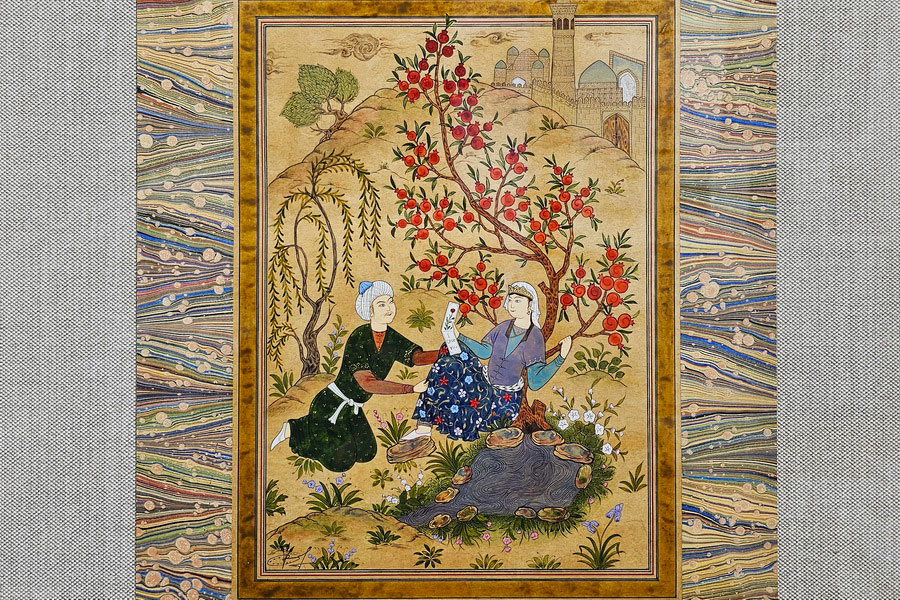
The subject matter of the miniatures crafted at "Ustoz-Shogird" is a significant facet of their appeal. Davlat Toshev, the school's founder, reveals that the Koran is of utmost importance to both him and his students. Moreover, they hold philosophy and Sufism in high regard, as reflected in many artworks that portray various religious and Sufi themes. Some might argue that Islam prohibits the depiction of human figures, but Toshev counters by clarifying that the Quran only specifically forbids the portrayal of the Prophet Muhammad. As a result, while the school's miniatures may feature other Islamic prophets, they're always depicted with covered faces and enveloped in sacred fire.
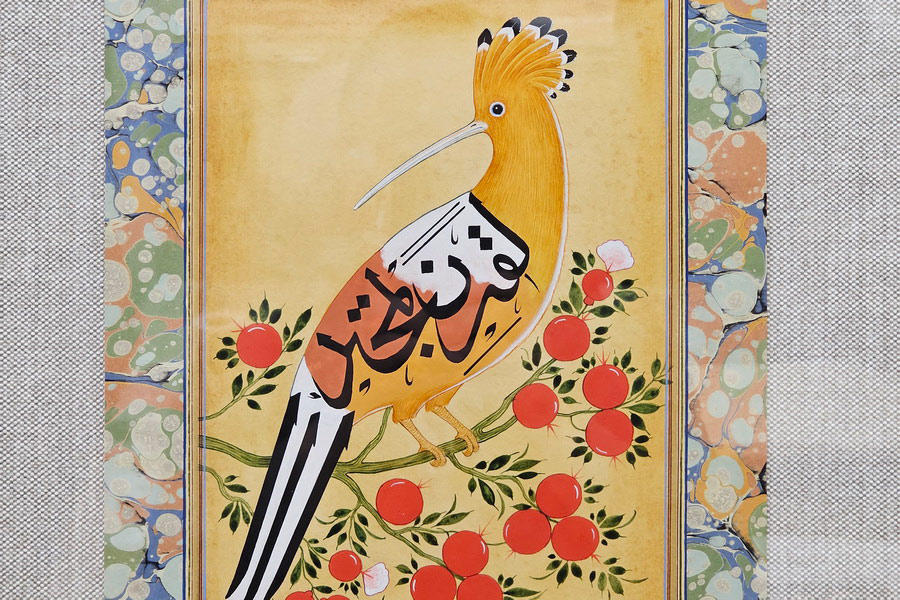
Symbolism abounds in the miniatures crafted at the "Ustoz-Shogird" workshop in Bukhara. One such symbol is the "Charkhi Falak", or the solar circle, akin to the "Shams-ul-Qamar" in Persian culture or the "Mandala" in Buddhism. Translated literally as "stone" and "spark", the symbol represents a stone wheel from which sparks fly. The wheel is a metaphor for the universe, and the sparks symbolize the brief yet impactful lives of people. Davlat Toshev delights in enlightening his visitors about each symbol embedded in the Uzbek miniatures, elucidating the hidden meanings of patterns, the significance of colors, and the philosophical underpinnings of each painting.
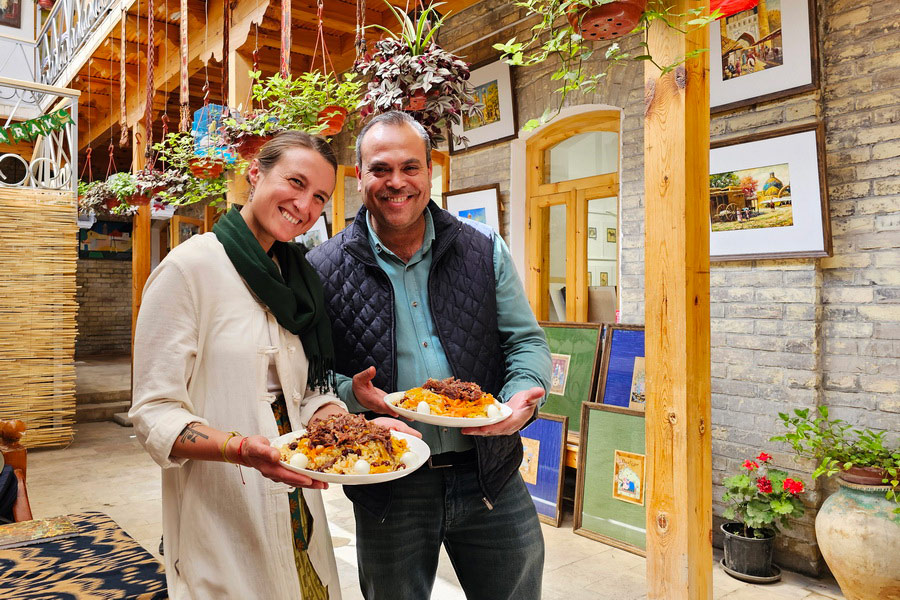
The doors of the "Ustoz-Shogird" workshop are always open to all. For those interested in a master class, Toshev also offers to teach how to prepare authentic Bukhara pilaf—a recipe that differs markedly from the popular Tashkent variety. His school continues to grow with an increasing number of students, nurturing new talent and creating art pieces that find homes with lovers of Oriental painting across the globe, from the USA to France, Italy, Germany, Argentina, and beyond.

